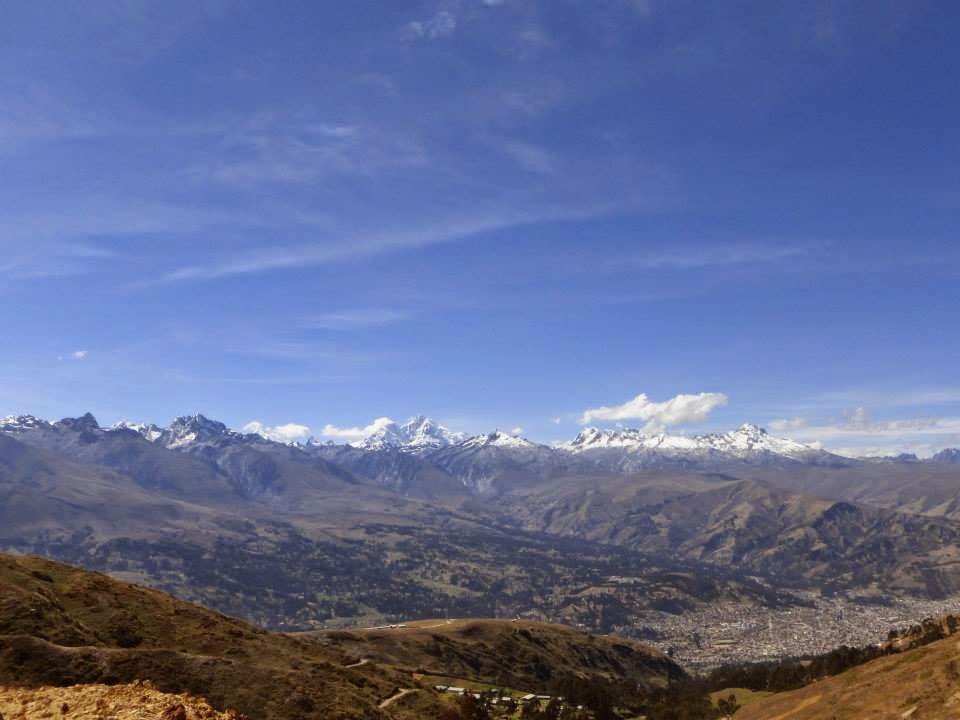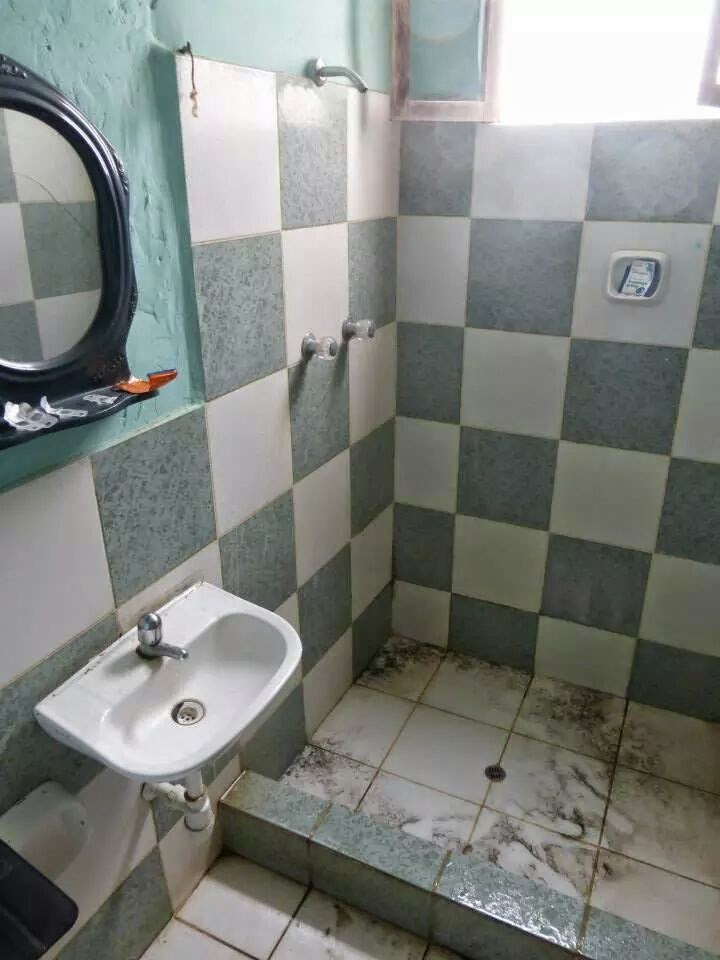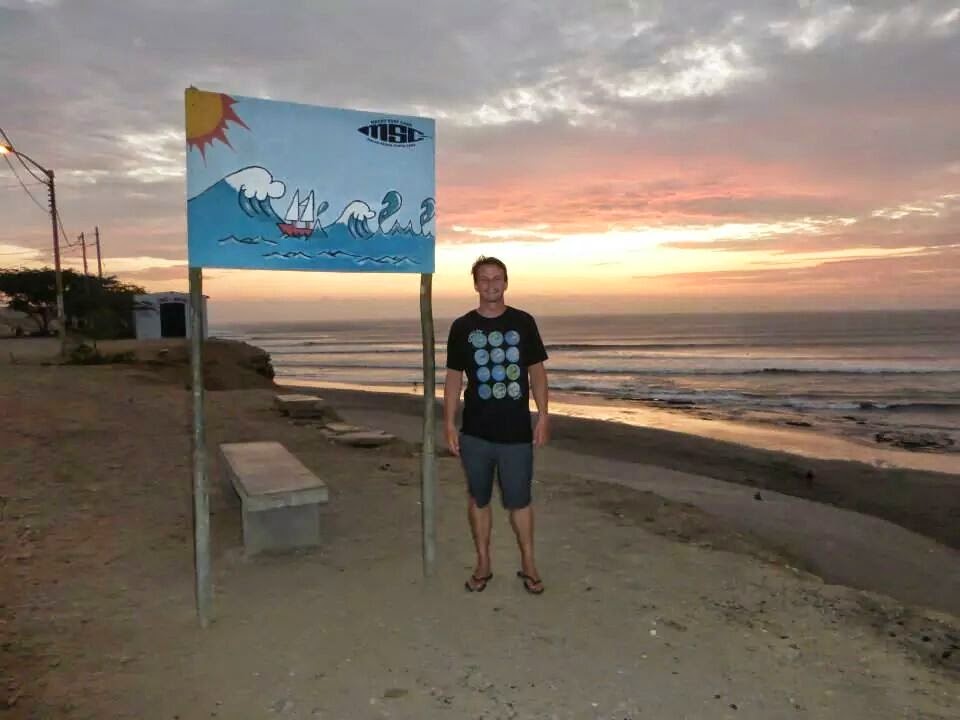Not far from Huanchaco are some amazing ruins, including Chan Chan, the largest pre-Incan city in South America and two large temples, the Huaca de la Luna and Huaca del Sol. Chan Chan covers 8 square miles and is still being excavated, however, tours are offered in a partially restored palace on site which was a large maze of intricate, adobe sculptures and towering, defensive walls.
As my guide, the two locals in our group and I were leaving the ruins, a group of 30 or more local middle school students from an all girls academy were walking in. One of them grabbed my shirt and insisted on taking a picture with me, which led to a frenzy as all of them fought for five minutes to get their picture taken with me too. Even the teacher got in on the photo shoot! By the time I got my camera out and turned it back on them, they had all ran away, suddenly embarrassed. Probably the closest I'll ever be to bring famous...
I left Chan Chan and headed to the other major ruins for a free tour of the enormous temple. Somehow, I ended up in another all girl school group again, though it appeared my five minutes of fame was up, thankfully.
Original wall painting at Huaca de la Luna. This 4' x 4' design has not been restored in any way, pretty amazing!
This detailed painting was part of an intricate design covering a five story exterior wall.
Perhaps more interesting to me than even the ruins was the public transport getting from Huanchaco to Trujillo to the ruins and back. Wanting to avoid comparatively expensive taxis, I've gotten quite comfortable taking buses everywhere, though with mixed success. From Huanchaco to Chan Chan, the bus costs 1.5 soles or 50¢ and is pretty straightforward. The bus is a 20 foot long beater that chugs slowly along, making frequent stops wherever people are waiting alongside the road. There are no set bus stops and no other foreigners onboard.
From Chan Chan to Trujillo, the major city where I ate lunch, I managed to take a similar looking bus, get completely off route and ended up jumping off and into a taxi to get the main Plaza de Armas, a charming mix of colonial architecture and dinghy casinos.
Didn't realize The Excalibur had gone international... Think I'll stick to Vegas!
After getting to the Huaca del Sol by taxi, I took a collectivo back to Trujillo where I hoped to catch a bus. A collectivo is basically a van that operates as a mini bus along a set route that may not have enough traffic to warrant taxis or needs a bus more than every 15 minutes. With a driver up front and an assistant sitting in the back yelling the route out the window to passersby, collecting fare and opening the sliding door to let people on and off, there is nothing in America that compares.
A typical collectivo. At one point on the way back from the Huaca del Sol, including the driver, assistant crouching on the floor and children on their parents' laps, there were 24 people in our van! Seat belts? Max capacity? Some concepts we take for granted don't translate as well as others.
Leaving the collectivo, I got on a bus along the Hunachaco route, though 20 minutes in, I realized it was headed the opposite direction I needed. Locals yelling and pointing at another bus, I jumped from the moving bus, dodging cars in the stalled traffic going the other way and hopped into the bus I needed, finally arriving home after dark. All in a day's travel in Peru!











































